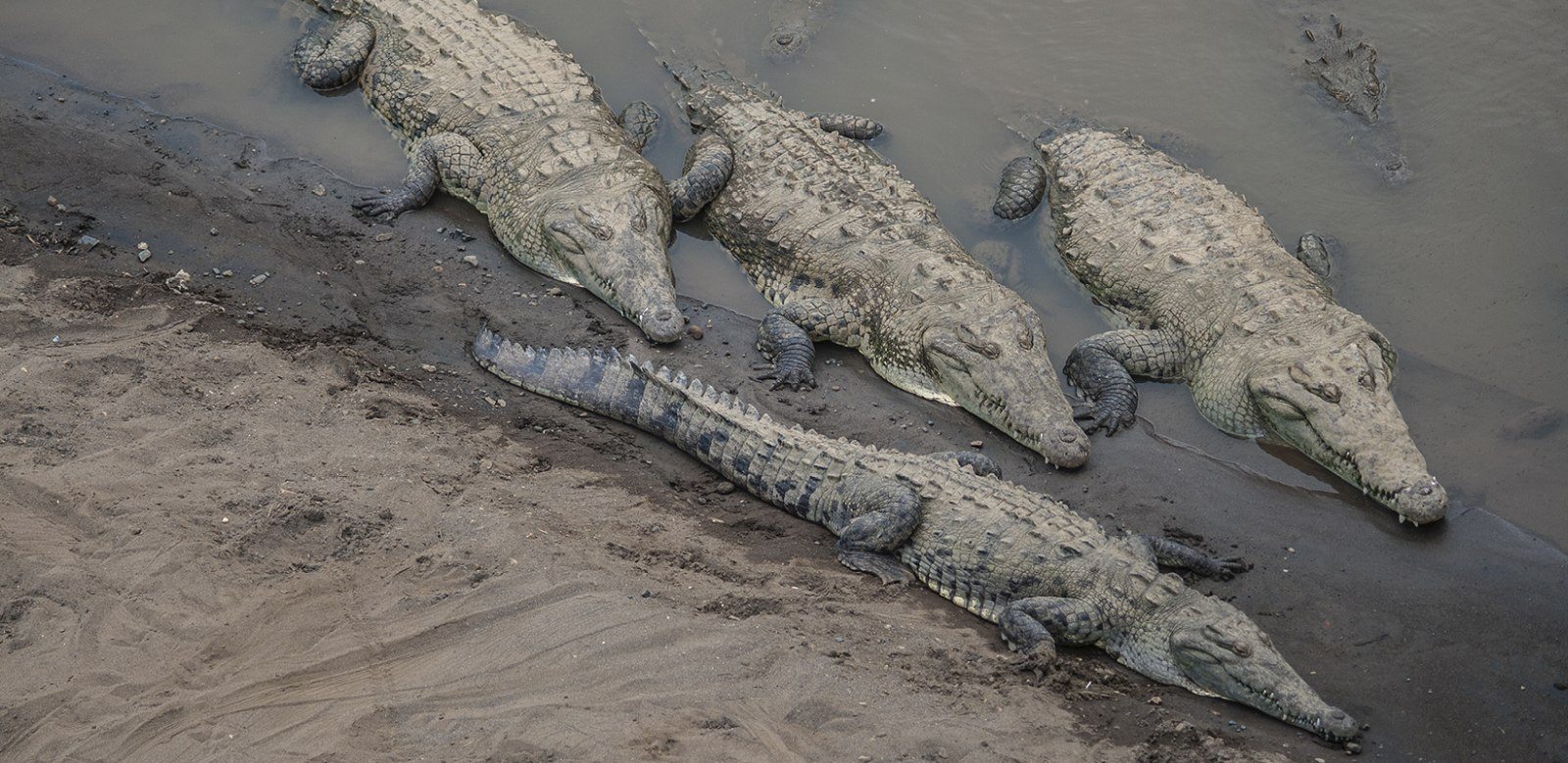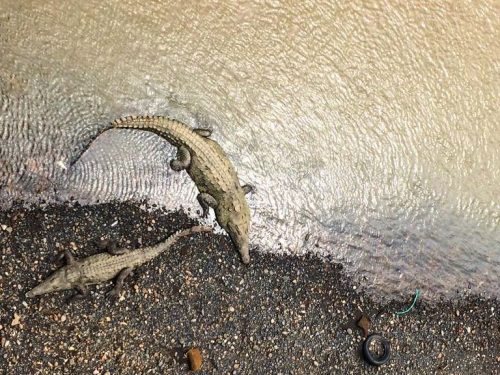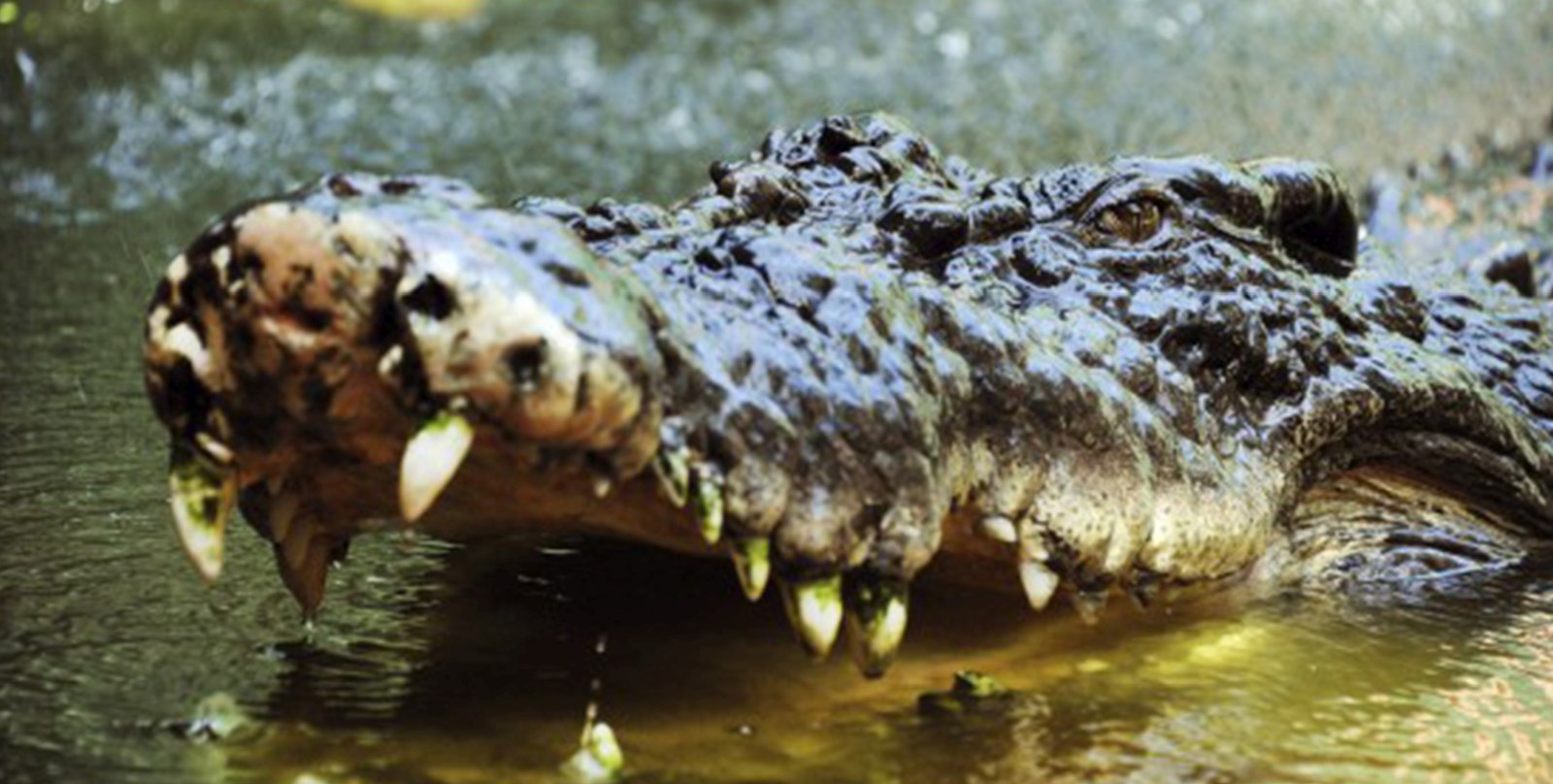
Crocodile sightings are frequent on the Tempisque River, but in 2012 something happened that alarmed a group of scientists: there were three males for every female in the river – when the usual proportion was one male to one female.
“This had never been seen in the country before. We had to respond to the question, what caused this?” says Mahmood Sassa, a member of the research team and director of the Organization of Tropical Studies’ (OET) Palo Verde biological station, to The Voice of Guanacaste.
Since then, a group of investigators from the United States, Costa Rica and Spain have published four studies between 2015 and 2017 that suggest that the cause is a synthetic steroid known as methyltestosterone (MT), which is often used to raise tilapia, a common practice in the region. It is also used – illegally – for beef cattle, although there is less evidence of this use.
The most worrisome consequence for the community is that male crocodiles are more territorial than females, and they travel to other places where they previously were rarely seen.
Sassa and other experts insist that precautionary measures must be taken because a male outside of his habitat usually looks for easy prey, such as cattle or even people crossing the river.
Read: What you should do if you’re near a crocodile
A common – but not harmless – chemical
Using MT is one of the most common practices for turning young fish into males and achieving uniform development and a greater average size.
Crocodiles ingest the chemical when water is released into the environment or when the tilapia are eaten when the fish escape or the crocodiles make their way into people’s properties.
“It’s always been considered a harmless molecule, so much so that the agricultural industry uses it as a standard,” said Sassa.
Leiber Quirós, the manager of occupational and environmental safety for the tilapia hatchery Aqua Corporación, agrees. However, he alleges that the use of MT at his farms is controlled.
“The tilapia are treated in incubators and the water is sent to a treatment system where it is guaranteed, through analysis, that the MT doesn’t enter the environment,” he said.
According to Quirós, his company is certified under international Best Practices in Agriculture (BPA) and the standard of the Aquaculture Stewardship Council (ASC). Both standards demand holding water for 48 hours before releasing the liquid.
Is that enough?
For Juan Bolaños, a crocodile specialist who took part in the research and worked 12 years in the crocodile-control program Aqua Corporación, the study shows that the measures that have been taken are not enough and there must be changes in the industry.
Although he knows that sexual reversal in tilapia is necessary for producers, because of the consequences he says that the environmental measures must be more extreme.
“[Tilapia farms] have to be totally ex-situ [off-site in isolated tanks] or they have to change their way of sexual reversal, such as using genetically modified tilapia that only produce males,” said the specialist.
Are there other causes?
The research team thought that the increase in temperatures in the Tempisque might have impacted the development of embryos: the water’s temperature is a key factor in determining a crocodile’s sex while it develops in the egg.
Although the Tempisque’s temperature has increased, the studies found that this was not the reason so many males were hatched.
Doctor Laura Porras Murillo, from the International Institute of Wildlife Conservation and Management (ICOMVIS), agrees with the study on this point.
“The unbalanced proportion is not due to an increase in ambient temperature … but rather is a result of exposure to several substances present in bodies of water that are ‘residue’ from local agricultural and livestock production,” said Porras, who has participated in the research on the effect of river pollution on crocodiles.
“These are well-executed, solid studies. The evidence they present seems to be strong, and we must consider that these studies include experiments. This is a subject that is ripe for more research,” said Arguedas.
Juan Bolaños, the crocodile specialist, agrees. For him, the study raises a greater worry: “If this is happening to crocodiles, it could happen to turtles, fish, birds, etc. We cannot divert attention from this problem.”
Know the Research:
Initial study discovering the ratio of 3: 1
Temperature analysis on the Tempisque River
Contamination of the river affects the sex of crocodiles








Comments